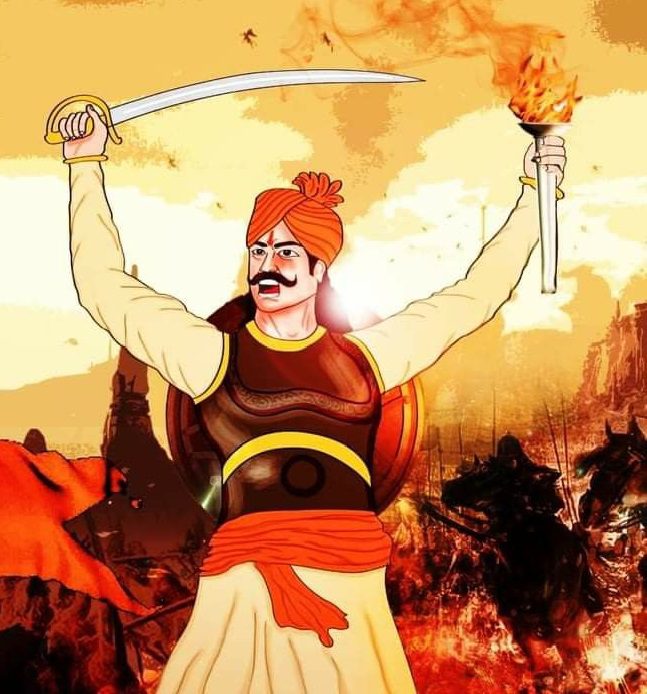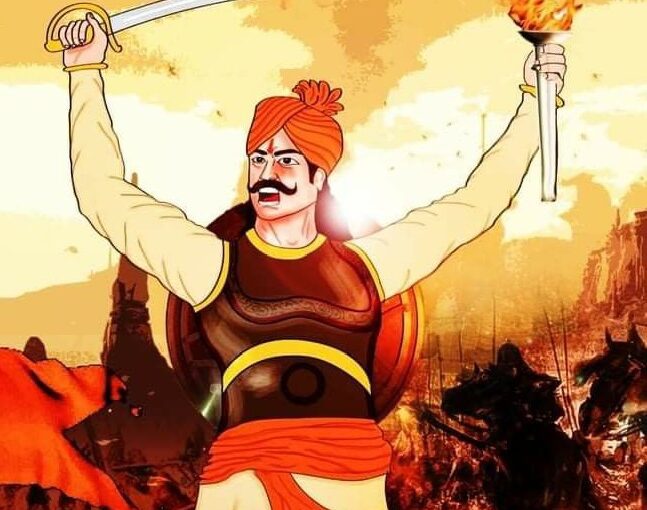Content
Background: Origins of Jat Community and their 1st Rebellion against Mughals
Many eminent historians believe that initially, the Jats were an agricultural class that later turned themselves into a strong martial community. The Jat’s are well known for their indomitable valor, strong individualism and as R.C. Majumdar has mentioned in his book The Mughal Empire
“He (Jats) is independent and is self-willed but he is reasonable but peaceably inclined if left alone.”

Rajaram was the chief of this state (Sinsani of Bharatpur).
According to the legends The Jats claimed themselves to be the descedents of the ancient Yadavas.
Prior to the reign of Aurangzeb, the Jat community was involved mainly in the agriculture profession but some incidents strongly suggest that these people at the same time followed martial tradition. For example, when Mahmud Ghazni plundered the famous Somnath temple in 1025 CE, during his return journey the Jats launched a mass assault on the retreating army of Ghazni.

This gave us glimpses of Jats’ martial tradition. However, the real history of this community begins with the bigotry of Aurangzeb’s rule from 1658 CE to 1707 CE. As we had covered in our previous article of the famous Jat Rebellion which was led by Gokula in the year 1669 CE. This was the first major armed insurrection of Jats against Aurangzeb’s rule.
Although initially, Gokula was very successful in his rebellion. But due to lack of firepower and support the rebellion was brutally crushed by the Mughals and they mercilessly killed Gokula.
Rajaram Jat
The Mughals crushed the first Jat rebellion but this was just the beginning of the end. The Jats of Haryana rose again this time with more fury under the leadership of Rajaram.
Rajaram Jat was the son of Bhajja Singh who was the chief of Sinsani (later Rajaram became the chief of Sinsani [Sinsini]). His name is still remembered among the Jat community. He militarized the Jat and organized them to form a proper standing army.

He was aware of the fact that his enemy i.e. the Mughals had advanced weapons in their arsenals. He learned the lesson from Gokula’s rebellion and decided to train his fellow Jat soldiers in firearms and made them capable to join the regular army.
He also initiated the task of building small forts which were known as GARHI in forest areas for raiding the Mughal territories and their contingents. To protect the forts from the artillery they erected mud walls that were built around them.
These forts played a significant role in the mobilization of the Jat. They were used as a military base, a place for refugees, or as a storage of their booty.
Unending Raids of Rajaram
When Aurangzeb went towards Deccan to suppress the Marathas the northern region of the Mughal Empire started crumbling. Jats took full advantage of this situation. Under Rajaram, the Jats raid several unprotected Mughal dominions.
The Mughals generally the path to reach Deccan which passed through Jat territories. Rajaram plundered and sacked several Mughal villages near Agra. They continuously harassed the Mughals along the route which connected Delhi to Agra and Dholpur.
After raiding the region of Safi Khan the governor of Agra Rajaram decided to sack Sikandra. Here a titanic encounter ensued between Jats of Rajaram of Mughals under Abul Fazal (Faujdar). The military tactics of Abul Fazal saved the Mughals and eventually saving the tomb of their former emperor (Akbar) from plundering.
Rajaram’s launched his next campaign in 1687 against the great Turani warlord Aghar Khan who was returning from Kabul to Bijapur. The Jats inflicted heavy casualties on the Agar Khan’s contingent and defeated them. The Jat captured huge booty along with horses, carts, and women.
Aghar khan, his son in law and their 80 adherent were killed by the Jats in the encounter.
In the year 1688 Rajaram decided to attack Sikandra in 1688 here they attacked or maybe inflicted a defeat on Mahabat Khan. From here they marched toward the Land of Five Rivers i.e. Punjab.
At Punjab, the valorous Jats met stiff resistance and were forced to retreat. Now Rajaram decided to finish his former unfinished task when he first raided Sikandra i.e. plundering the tomb of Akbar. Rajaram attacked the tomb of Akbar and damaged the building and took away precious stones, carpets, lamps, gold and silver vessels, etc.
Due to his raids and probably from the plundering of Akbar’s tomb Aurangzeb decided to put an end to Rajaram and his Jat army. Aurangzeb sent his grandson Bidar Bakht to counter the ferocious activities of Rajaram.
The young prince i.e. Bidar Bakht was 17 years old and he immediately initiated the task of crushing Jats. During this time there was a deadly war broke out between the Rajputs of Shekhawat and Chauhan clans.
Rajaram Jat decided to support the Chauhan Clan probably due to his close ally. Seeing this unison of Chauhans and Jats young Mughals (faujdar of Mewat) decided to join hands with the Shekhawat Rajputs.
The battle was a total carnage and both sides suffered heavy losses but the most important part of this war was the death of Rajaram. The audacious Jat leader was shot by a Mughal musketeer in 1688 CE.
Last Days
After the martyrdom of Rajaram, young price i.e. Bidar Bakht laid a siege on the Sinsani fort. But the Jats gave stiff resistance to the Mughals and even cut their supply lines and harassed them for several months. They also launched night attacks on the Mughal camps to demoralize them.
But the superiority of the Mughal firearms and their well-trained troops captured the fort of Sinsani in the year 1690 after heavy losses.
Rajaram was able to generate the spirit of freedom among the Jats and due to this even after his martyrdom the Jats rose again and continued their struggle against the alien rule of the Mughals. But his valorous saga had not been appreciated by our modern historians.
LIKE WHAT WE ARE DOING? DONATE TO DHARMAYUDH !
If you Support what we are doing and would like to contribute to help us grow and reach more Indians to teach them more about such forgotten historic Indian Heroes and stories, please consider donating any amount. It will help us grow.

